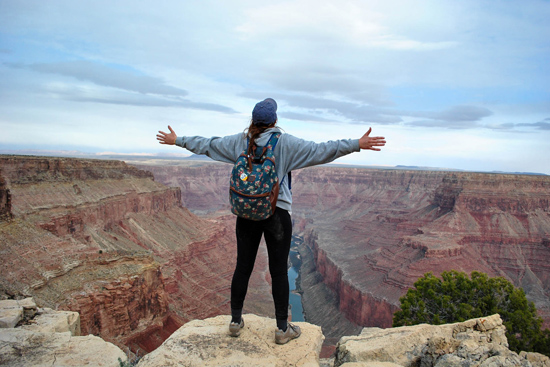Into the Hollow
Spring break volunteers find Kentucky's infamous Harlan County
Click on the slide show above to learn more about one of this year’s ASB trips.
Thisspring break, hundreds of Boston University students once again choseto make a difference, volunteering in disaster zones and troubledcommunities across the country, joining Alternative Spring Breaks trips organized by BU’s Community Service Center.
Last year, BU Today’s Vicky Waltz chaperoned students who reached Dupree, S.D.,to work with Native American children at a Sioux YMCA. This year, sherevisited her role, in a very different part of the country:
Twisting roads wind through dense Appalachian forests, leading to abandoned coalmining sites, dismantled railroads, decrepit shacks, and trailers. Devoid of cell phone towers and shopping malls, the area can almost make one believe that the new millennium hasn’t yet arrived in this gloomy hollow between the Cumberland and Pine Mountains called Harlan County, Kentucky.
Ancient mountains, shrouded in fog and covered by a light dusting of snow, are far from white sandy beaches along Miami or Cancun. But 11 Boston University Alternative Spring Break volunteers still chose to come here, more interested in helping Appalachia’s poorest people than in catching waves.
It took Yue Zhu more than 20 hours to fly from China to the United States, and a matching 20 hours to drive from Boston to Kentucky. Each trip bridged profound, if very different, cultural divides.
“My friends back home think I make my life very difficult,” says Zhu (SMG’11). “They thought I should spend my spring break in New York or Chicago, but I wanted to contribute to something bigger than myself.”
Busloads of volunteers from across the country come to Cranks Creek Survival Center, a nonprofit organization that provides assistance to thousands of residents. Founders Becky and Bobby Simpson describe the center as “a helping hand, not a handout.”
The BU volunteers spent the week building a roof over a wheelchair ramp and enclosing a bathroom at Cranks Holiness Church. The majority of the students had never even hammered a nail — let alone installed a bathroom ceiling — but they learned.
“I was really motivated by Brother James, the church minister,” says Lynese Wallace (CGS’09).“He’s 72 years old, and he worked harder than all of us. We had to beg him to take a break and eat lunch. He worked in the mines for more than 30 years, and before that he was a carpenter. I think his energy inspired a different kind of work ethic in all of us.”
“I wasn’t expecting the genuine friendliness of everyone here,” says Cristina Yim (CAS’10). “While we were hammering on the church roof, everyone that drove by would honk their horn and wave.”
Harlan County, made famous by a violent labor upheaval in the 1930s that earned it the name “Bloody Harlan,” remains one of the country’s most productive coal mining regions. Although thousands of tons are removed each year, more than 30 percent of the county’s residents live below the poverty level.
“The coal mining companies — they make a few people rich,” says 73-year-old Becky Simpson. “And the rest of us work the mines and suffer.”
The daughter of a logger, Simpson grew up in a two-room cabin with her parents and three siblings. The hollow she once called home is a mine site now — a silt pond is where the family’s house once stood. Simpson drove a coal mining truck from the time she was 13 until she was 20. As an adult, she cut timbers for the mines with a crosscut saw. “Back then, there was no such things as chainsaws,” she says.
In 1977, a series of floods — caused largely by strip mining — devastated the tiny community of Cranks. “People lost everything they had,” Simpson recalls. “I was just standing on the creek bank, crying my eyes out, and I thought, somebody has to do something.”
Simpson’s campaign against the strip mining companies took her to Washington, D.C., the farthest she’s ever traveled from Harlan County, where she testified before Congress. It also inspired her to establish Cranks Creek Survival Center 32 years ago. “I’m getting old now, and Bobby and me, we’re in pretty poor health,” she says. “But we don’t never expect to quit. I don’t know what we’d do if we weren’t helping folks.”
Seated in the Simpsons’ cluttered living room, Abby Fitzsimmons (CAS’11) reflects on the journey. “I’m so amazed by the people we’ve met here,” she says. “They don’t have a lot, but they’re still filled with faith and happiness.”
To read part two, click here. To read part three, click here.
Read more Alternative Spring Breaks stories.
Vicky Waltz can be reached at vwaltz@bu.edu.
This Series
Also in
Alternative Spring Breaks
-
March 19, 2014
Alternative Spring Breaks: Nashville, Tennessee
-
March 18, 2014
Alternative Spring Breaks: Natchez, Mississippi
-
March 17, 2014
Alternative Spring Breaks: Staten Island, New York

Comments & Discussion
Boston University moderates comments to facilitate an informed, substantive, civil conversation. Abusive, profane, self-promotional, misleading, incoherent or off-topic comments will be rejected. Moderators are staffed during regular business hours (EST) and can only accept comments written in English. Statistics or facts must include a citation or a link to the citation.